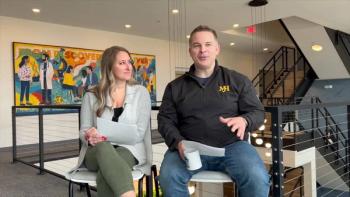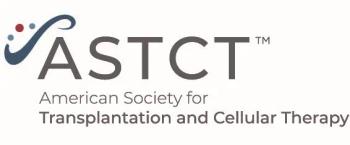
Three-Drug Regimen Beneficial for High-Risk Cytogenetic Myeloma Subgroup
Treatment with carfilzomib, lenalidomide, and dexamethasone improved the poor prognosis associated with high-risk cytogenetic abnormalities of multiple myeloma.
Treatment with carfilzomib, lenalidomide, and dexamethasone (KRd) improved the poor prognosis associated with high-risk cytogenetic abnormalities of multiple myeloma compared with treatment with lenalidomide and dexamethasone alone (Rd), according to the results of a pre-planned subgroup analysis of the ASPIRE trial
The phase III ASPIRE trial compared Rd with or without carfilzomib in 792 patients with relapsed multiple myeloma. Results showed that progression-free survival (PFS) was significantly improved with the three-drug regimen.
Hervé Avet-Loiseau, MD, PhD, of the Centre de Recherche en Cancerologie de Toulouse in Toulouse, France, and colleagues conducted this pre-planned subgroup analysis to determine if KRd improved outcomes by baseline cytogenetics.
“For patients with high-risk cytogenetics, who were defined using the highest cutoff possible for the presence of del(17p) (≥ 60%), treatment with KRd resulted in a median PFS of nearly 2 years, which was a 9-month improvement compared with patients treated with Rd,” the researchers wrote. “KRd improves but does not abrogate the poor prognosis associated with high-risk cytogenetics in patients with relapsed multiple myeloma and should be considered a standard of care in these patients, irrespective of baseline cytogenetic risk status.”
The researchers evaluated cytogenetics in 417 patients; 24% of patients were classified as high-risk and 76% were classified as standard-risk.
Patients assigned to the three-drug regimen had improvements in PFS regardless of their cytogenetics subgroup. Patients with high-risk cytogenetics had a median PFS of 23.1 months when treated with KRd compared with 13.9 months for Rd (hazard ratio [HR], 0.70 [95% CI, 0.43–1.16]). Patients with standard-risk cytogenetics assigned KRd had a median PFS of 29.6 months compared with 19.5 months for Rd (HR, 0.66 [95% CI, 0.48–0.90]).
Additionally, patients in both subgroups had improved overall response rate when assigned to KRd compared with Rd (high risk: 79.2% vs 59.6%; standard risk: 91.2% vs 73.5%).
“Approximately fivefold as many patients with high- or standard-risk baseline cytogenetics achieved a complete response or better with KRd compared to Rd,” the researchers wrote. However, depth of response was not assessed.
“Further analyses for PFS and overall response rate in the high-risk subgroup, by specific baseline cytogenetic abnormalities and prior treatment, demonstrated a consistency of benefit for KRd vs Rd in patients with 1 vs 2 or more prior lines of therapy, prior exposure to bortezomib or lenalidomide, and in those with t(4;14) or del(17p) only,” the researchers wrote. “The number of patients in these particular analyses was small, and robust conclusions cannot be drawn as to the relative contribution each cytogenetic abnormality may have on PFS or overall response rate.”
Newsletter
Stay up to date on recent advances in the multidisciplinary approach to cancer.

















































































